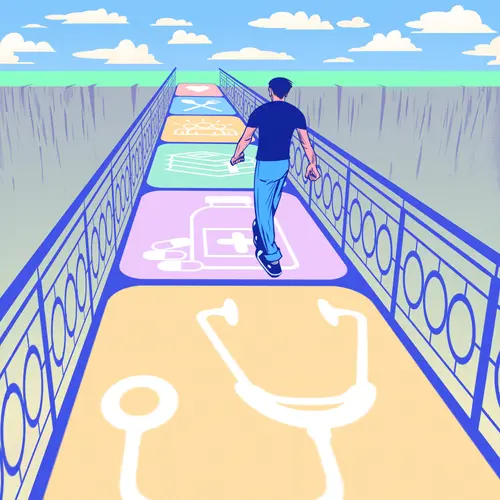Peripheral artery disease (PAD) is a condition in which plaque builds up in the arteries. Plaque is made of cholesterol, fat, calcium, and fibrous tissues.
When plaque builds up in the arteries, atherosclerosis develops. Over time, this plaque hardens and narrows your arteries. It can significantly limit the flow of oxygen-rich blood to your organs and throughout your body. This restricted blood flow can sometimes cause a blocked artery in your leg.
When you have a blocked artery in the leg, a procedure to put stents in your legs helps keep your blood flowing to prevent more serious health problems from developing. A stent is a tiny tube that's placed into an artery or blood vessel to hold it open. It's left in permanently. These stents are put in place during a procedure called angioplasty.
What Are the Symptoms of PAD?
Claudication, which is pain caused by restricted blood flow, is common in those with PAD. The severity of your symptoms can vary from mild discomfort to debilitating pain. Some people struggle to walk at all. The location of your pain will depend on the location of the blocked artery.
You may experience other peripheral artery disease legs symptoms, including:
- Muscle pain or cramping in your legs or arms
- Weakness or numbness in your legs
- Coldness in the lower leg or foot
- Sores on the feet, legs, or toes
- Weak or no pulse in the legs or feet
When you’re experiencing PAD symptoms, it’s important to consult with your doctor to get tested for a diagnosis. If untreated, a blocked artery can damage your health.
What Happens If You Have a Blocked Artery in Your Leg?
Much like clogged arteries in the heart, PAD is associated with an increased risk of stroke or heart attack. Any blocked blood flow to your legs can cause pain, weakness, and numbness.
A blocked artery also increases your risk of developing a serious infection. Gangrene can develop from severely blocked blood flow and cause body tissue to die. In severe cases, this may require leg amputation.
When you’re experiencing leg pain, contact your doctor to discuss treatments such as putting stents in legs to correct your circulatory problem.
What Is Angioplasty for PAD?
When you have a blocked artery in your leg due to PAD, an angioplasty can help restore blood flow and improve overall health. During the procedure, a doctor uses a catheter-guided balloon to open the narrowed artery with a stent. This is a less invasive procedure than bypass surgery and requires a shorter recovery time.
After an angioplasty PAD procedure, you may be sore for a few days. Total recovery can take six to eight weeks and your leg may remain swollen for several days or weeks. This swelling will improve as blood flow is restored.
As your incision heals, walking short distances is okay and encouraged. It’s important to slowly increase how far you walk during recovery as you may be still experiencing some pain as you heal.
You may need to call your doctor after an angioplasty PAD procedure if you experience any of the following symptoms:
- You have bleeding or swelling at the catheter site.
- Your leg, where the catheter was, begins to change color or is cold to the touch.
- The incision becomes red or has yellow or green discharge draining from it.
- Your leg swelling isn’t improving or is worsening.
- You feel weak throughout your body or your speech is slurred.
How Do I Reduce Symptoms of PAD and My Risk of Another Blocked Artery?
Angioplasty doesn’t cure the cause of artery blockages. This means that your arteries can narrow and become blocked again if you don't make changes to your diet and lifestyle. To lower your chances of developing another blocked artery, follow these healthy living tips:
Quit smoking. Smoking is a major risk factor for developing PAD and increases your risk of having a heart attack or stroke. It also limits blood flow throughout the body, which is harmful to those with clogged or narrowed arteries.
Get moving. Regular physical activity can help reduce some PAD symptoms. At first, walking may cause pain, but it will encourage blood flow.
Eat a healthy diet. Many people with PAD have high cholesterol, which causes fatty deposits in your blood vessels. These deposits continue to grow, which makes it hard for blood to flow through the arteries.
Manage chronic conditions.Type 2 diabetes increases your risk of developing leg complications from PAD. Control your blood sugar with a healthy diet and medication.
Living a healthy lifestyle will help reduce your PAD symptoms and lower your risk of developing another blocked artery in the future.

